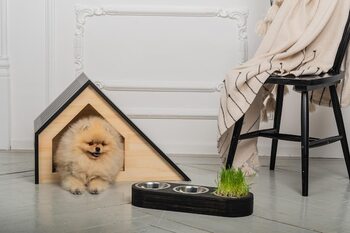Urban spaces: designing a home that promotes sustainability

Urban spaces: designing a home that fosters sustainability is an invitation to reimagine our everyday environments. In a world where urbanization is rapidly advancing, every corner of our cities can become a bastion of sustainability. From the smart use of spaces to the integration of natural elements, this article will guide you through strategies and practical tips to create a home that is not only functional but also environmentally friendly. Transform your space into a role model for future generations.
The importance of sustainability in urban homes
Sustainability in urban households is crucial not only for the health of the environment but also for improving the quality of life of its inhabitants. In cities where space is limited and the demand for resources is high, adopting sustainable practices becomes a collective responsibility. Implementing solutions such as using renewable energy, rainwater harvesting systems, or urban agriculture techniques not only reduces our ecological footprint but also promotes a more conscious and healthy lifestyle. By integrating these elements into our homes, we create a sanctuary that respects and protects the natural environment.
Moreover, sustainability in urban spaces fosters a more resilient and cohesive community. By designing homes that prioritize energy efficiency and responsible resource use, we inspire our neighbors to do the same, creating a multiplier effect that benefits the entire community. The creation of shared green spaces or community gardens not only enhances the neighborhood's aesthetics but also provides environmental benefits by increasing biodiversity and improving air quality. In this sense, each home can become an agent of positive change, driving a more sustainable future for generations to come.
2. Key elements for designing eco-friendly spaces
To design eco-friendly spaces, it is essential to consider elements that reduce environmental impact and promote energy efficiency. The choice of sustainable materials, such as certified woods, recycled ceramics, and non-toxic paints, can transform a home into an ecological refuge. Additionally, incorporating appropriate insulation solutions not only improves the comfort of the space but also decreases the need for artificial heating and cooling, resulting in lower energy consumption. The conscious selection of these materials should be accompanied by a design that maximizes natural light, using large windows or skylights to reduce electricity use during the day.
Another key element in creating eco-friendly spaces is the integration of vegetation. Incorporating plants both indoors and outdoors not only improves air quality but also adds a natural aesthetic to the home. You can opt for vertical gardens or green terraces that not only beautify the space but also contribute to urban biodiversity. Additionally, rainwater harvesting systems can be implemented to irrigate these green areas or even for sanitary uses within the home. By combining these natural elements with sustainable technologies such as solar panels and water efficiency systems, it is possible to establish an environment that fosters a deep connection with nature while living in harmony with the urban environment.
3. Integration of nature: vertical gardens and urban gardens
The integration of nature into urban spaces is a trend that not only beautifies the environment but also contributes to sustainability. Vertical gardens, for example, are an innovative solution to maximize space usage and improve air quality in densely populated areas. These green walls not only filter pollutants and produce oxygen, but also act as thermal insulators, thereby reducing the energy consumption of buildings. By selecting native and climate-adapted plants, a balanced ecosystem is achieved that requires less maintenance and water resources.
On the other hand, urban gardens offer an invaluable opportunity to reconnect people with nature and foster healthier eating habits. Growing your own food at home not only reduces the carbon footprint associated with transporting agricultural products but also promotes biodiversity by attracting pollinators and other beneficial organisms. Additionally, these spaces can become community meeting points where neighbors share knowledge about sustainable gardening and ecological practices. Thus, both vertical gardens and urban gardens are perfect examples of how integrating nature into our homes can enrich our lives while caring for our planet.
4. Sustainable materials: what to choose and why?
When designing a sustainable home in urban environments, the choice of materials is crucial for reducing environmental impact and promoting responsible practices. Opting for sustainable materials, such as certified wood, bamboo, or recycled products, not only minimizes the carbon footprint but also contributes to the health of the home by reducing exposure to toxic substances. Wood sourced from sustainably managed forests is an excellent option due to its ability to store carbon and its durability. At the same time, bamboo stands out as a renewable alternative that grows rapidly and has natural antibacterial properties.
In addition to selecting eco-friendly materials, it is important to consider their life cycle and manufacturing processes. Choosing products with environmental certifications ensures that they have been produced with ethical and responsible practices. For example, recycled materials, such as reclaimed steel or glass, not only add a unique character to interior spaces but also help reduce the demand for new resources. Likewise, incorporating local elements in construction or decoration contributes to the circular economy of the area and reduces emissions from transportation. Thus, by opting for these sustainable materials in your urban home, you are not only creating a healthier space for yourself and your family but also a positive legacy for the environment.
5. Renewable energy at home: accessible options for everyone
The incorporation of renewable energy in the home has become more accessible than ever, allowing urban families to not only reduce their carbon footprint but also decrease their electricity bills. A popular option is the installation of solar panels, which convert sunlight into electrical energy. While the initial investment may seem high, many governments offer tax incentives and financing programs that make their acquisition easier. Moreover, with advancements in technology, solar systems have become more efficient and adaptable to different types of homes, meaning that virtually any household can benefit from this clean and sustainable source.
Another interesting alternative is domestic wind energy. Although traditionally associated with large installations in rural areas, there are compact wind turbines designed for residential use in urban environments. These small units can be installed on rooftops or backyards and help generate additional electricity for the home. Additionally, investing in a solar heating system or solar water heaters are viable options that contribute to a sustainable lifestyle without compromising daily comfort. With these alternatives within reach, each home has the opportunity to become an inspiring example of energy sustainability.
6. Bioclimatic design: taking advantage of the urban climate in your favor
Bioclimatic design is a key strategy to maximize the energy efficiency of an urban home, taking full advantage of local climatic conditions. By orienting properly and using sustainable materials, spaces can naturally regulate their temperature, thus reducing reliance on artificial heating and cooling systems. For example, large south-facing windows can capture sunlight in the winter, while eaves or awnings can provide shade during the warmer months. This interaction with the climate not only enhances indoor comfort but also decreases the home's carbon footprint.
Additionally, integrating natural elements such as vertical gardens or green roofs contributes to creating microclimates that benefit both the home and its surroundings. These installations not only provide thermal insulation and filter the air but also promote biodiversity in densely populated urban environments. The implementation of these bioclimatic solutions not only transforms the aesthetics of the home, making it more attractive and welcoming, but also fosters a deeper connection between its inhabitants and the surrounding nature. Thus, every design decision becomes a tangible affirmation of a commitment to a sustainable future.
7. Sustainable mobility: how to improve access to your home
Sustainable mobility is an essential component for improving access to your home and contributing to the well-being of the urban environment. Incorporating options such as bicycles, efficient public transport, and safe pedestrian pathways can transform the way we move within our cities. By designing a home that favors these alternatives, not only is the dependence on motorized vehicles reduced, but a more active and healthy lifestyle is also promoted. Spaces such as bike garages, rest areas for cyclists, or charging stations for electric vehicles can be integrated into the initial design of the home, ensuring that residents have easy access to sustainable transportation methods.
Additionally, it is essential to promote a community culture that values sustainable mobility. This can be achieved by creating networks among neighbors to share resources, such as electric cars or bicycles, and organizing events that encourage the use of public transportation. The integration of green spaces nearby also plays a crucial role; accessible parks and quiet areas invite walking or biking instead of using the car. By thinking strategically about how to improve access to your home from a sustainable perspective, you are not only creating a greener space but also actively contributing to the building of more connected and resilient communities.
8. Water management in urban environments: practical solutions
Water management in urban environments is essential for the development of sustainable homes. In this context, one of the most effective solutions is the implementation of rainwater harvesting systems. These systems allow for the capture and storage of rainwater for later use in irrigation, cleaning, or even in tanks for toilets. By harnessing a natural resource like rain, not only is the dependence on municipal supply reduced, but it also helps to decrease the risk of urban flooding, easing the burden on existing drainage systems. Another valuable strategy is the installation of water-saving devices on faucets and showers, as well as the choice of efficient appliances that optimize water consumption. Additionally, considering xeriscaping—which uses native plants adapted to dry climates—can be an excellent way to minimize the necessary irrigation while beautifying the urban environment. These actions not only promote responsible water use but also create green spaces that improve air quality and provide habitats for local biodiversity. With these practices integrated into our urban homes, we can build more resilient and sustainable communities for everyone.
9. Shared spaces: fostering community and collaboration
Shared spaces are a powerful tool for fostering community and collaboration in urban environments. By designing areas that invite neighbors to interact, a sense of belonging and mutual support is promoted, essential elements for the development of sustainable communities. These spaces can include community gardens, playgrounds, gathering areas, or even shared workshops where residents can exchange skills and resources. The creation of these places not only improves quality of life but also reduces the ecological footprint by allowing for the shared use of tools and materials.
Moreover, integrating collaborative spaces into urban design contributes to social resilience in the face of environmental challenges. By facilitating dialogue among residents, collective initiatives addressing issues such as recycling, urban agriculture, or reducing energy consumption are generated. Fostering an environment where people feel comfortable sharing ideas and working together not only strengthens interpersonal relationships but also empowers communities to make informed decisions about their surroundings. In this way, shared spaces become catalysts for change towards a more sustainable and conscious life within the urban fabric.
10. Global inspiration: successful examples of sustainable homes around the world
As sustainability becomes a global priority, various households around the world are demonstrating that it is possible to live in harmony with the environment without sacrificing comfort. In countries like Denmark, for example, modular homes have been implemented that use recycled materials and renewable energy systems, such as solar panels and wind turbines. These houses not only reduce their carbon footprint but also promote a sense of community by being designed to interact with the surrounding public spaces. This approach shows that sustainability can be integrated into urban life without compromising aesthetics or functionality.
Another inspiring example comes from Brazil, where projects like EcoCasa in Porto Alegre have set a new standard for eco-friendly housing. This model combines traditional building techniques with modern innovations, using clay and straw to create energy-efficient structures. Additionally, it includes rainwater collection systems and urban gardens that not only benefit the residents but also promote local biodiversity. These successful examples serve as beacons of hope and creativity for those looking to transform their own urban spaces into sustainable homes, showing that every small effort counts towards a greener future.



